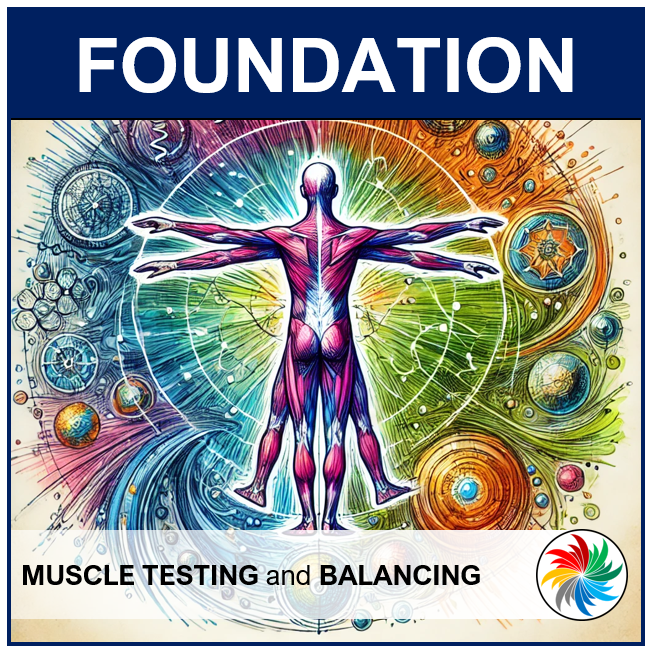
Level 1 is an entry-level course in kinesiology. This course integrates Western and Eastern healing philosophies, employing muscle testing, meridian balancing, and reflex techniques. It is designed for use by individuals, families, and health practitioners to promote self-care and holistic health.
This course provides practical everyday applications of Kinesiology for increased well-being on all levels. At the end of Level 1 you will be able to:
- Understand the concept of energy in the body based on Traditional Chinese Medicine.
- Prepare a person for accurate feedback and muscle monitoring.
- Demonstrate proficiency in muscle monitoring.
- Evaluate energy on the 14 major meridians.
- Balance a person’s energy using neurolymphatic, neurovascular, and spinal reflexes, meridian tracing, origin and insertion technique, food, and Emotional Stress Release (E.S.R.).
- Relieve mental and emotional stress and tension through the E.S.R. method.
- Understand the importance of adding a goal to the 14-muscle balance.
- Gain benefits in coordination, vision, sensory input, posture, and simple pain relief.
Core Concepts:
Triangle of Health: Balances structural (physical), biochemical (physiological), and mental/emotional (psychological) dimensions to achieve optimal health. Emphasizes that any imbalance in one dimension affects the others, leading to dis-ease.
Muscle Monitoring: A biofeedback mechanism to assess the body’s energy flow. Key to identifying and correcting imbalances in energy pathways (meridians).
Prechecks, ensure the body is ready for accurate testing. Includes: Switching (side-to-side, top-to-bottom, front-to-back). Central Meridian integrity. Dehydration checks.
Energy Systems Addressed:
- Neurolymphatics: Stimulates lymph flow to improve muscle strength and energy.
- Neurovasculars: Promotes blood flow to muscles and organs.
- Meridians: Balances the body’s energy pathways based on Traditional Chinese Medicine.
- Spinal Reflexes: Balances bilateral muscle imbalances via the spinal column.
14 Muscle Balance System:
Introduces 14 muscles corresponding to specific meridians. Each muscle is tested and balanced using various techniques, including neurolymphatic massage, neurovascular holding points, meridian tracing, and origin/insertion stimulation.
Muscles and Associated Meridians:
- Central: Supraspinatus
- Governing: Teres Major
- Stomach: Pectoralis Major Clavicular
- Spleen: Latissimus Dorsi
- Heart: Subscapularis
- Small Intestine: Quadriceps
- Bladder: Peroneus
- Kidney: Psoas
- Circulation Sex: Gluteus Medius
- Triple Warmer: Teres Minor
- Gall Bladder: Anterior Deltoid
- Liver: Pectoralis Major Sternal
- Lung: Anterior Serratus
- Large Intestine: Fascia Lata
Applications:
- Goal Setting: Adds focus to 14-muscle balance sessions, improving results and alignment with intentions.
- Stress Reduction: ESR and meridian balancing techniques alleviate physical and emotional stress.
- Posture Improvement: Balancing muscles enhances posture and physical alignment.
- Pain Management: Simple pain techniques, such as rubbing neurolymphatic points, relieve discomfort.
- Cross Crawl Exercises: Improves coordination and integrates brain hemispheres for enhanced learning and function.
- Food and Muscle Strengthening: Identifies foods that support energy and muscle health.
Training and Assessment:
Level 1 is a 15-hour course with practical demonstrations, hands-on practice, and review questions to solidify learning. Students learn the basics of muscle monitoring and balancing techniques for everyday application.
